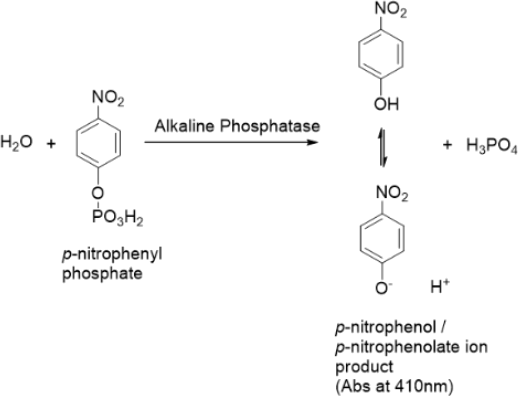Alkaline Phosphatase - CHEM 233L - Spring 2023
Hello, dear friend, you can consult us at any time if you have any questions, add WeChat: daixieit
Alkaline Phosphatase - CHEM 233L - Spring 2023
The enzyme studied in this experiment is alkaline phosphatase (Type VII-T from bovine intestinal mucosa). This alkaline phosphatase is a dimeric zinc- containing enzyme (MW ~150 kDa) consisting of two equal subunits. It
catalyzes the hydrolysis of phosphate monoesters to produce inorganic
phosphate; an important compound in many cellular functions. Alkaline
phosphatase has also been proved useful outside the cell (on the bench). For example, molecular biologists use alkaline phosphatase to improve cloning efficiency and immunologists use this enzyme for labelling and generating
colour in enzyme immunoassays.
To monitor the activity of alkaline phosphatase you will be using p-nitrophenyl phosphate (PNPP); a substrate which upon hydrolysis releases a yellow
coloured product called p-nitrophenol/p-nitrophenolate ion. At pH 8, this product absorbs optimally at 410 nm.

The following experiments will allow you to investigate the enzymatic activity of Alkaline Phosphatase while varying the PNPP substrate concentration,
both in the presence or absence of an inhibitor (sodium phosphate). The
reactions will take place in cuvettes and the rate at which the yellow product is formed will be monitored with the use of the Cary60 UV/Vis
spectrophotometer.
For determining the various enzymatic properties of alkaline phosphatase, including the KM and Vmax, your data analysis will include graphical
interpretations of your data.
|
Test Your Understanding 1. For the alkaline phosphatase reaction, monitoring the absorbance at 410 nm over time directly measures the A. the rate of pH change B. rate of product formation C. rate of substrate depletion D. phosphate in the reaction 2. As the alkaline phosphatase reaction is being monitored, we expect the absorbance at 410 nm to … A. increase over time B. remain constant over time C. decrease over time (Answer: 1 . B. , 2 A.) |
2023-07-21